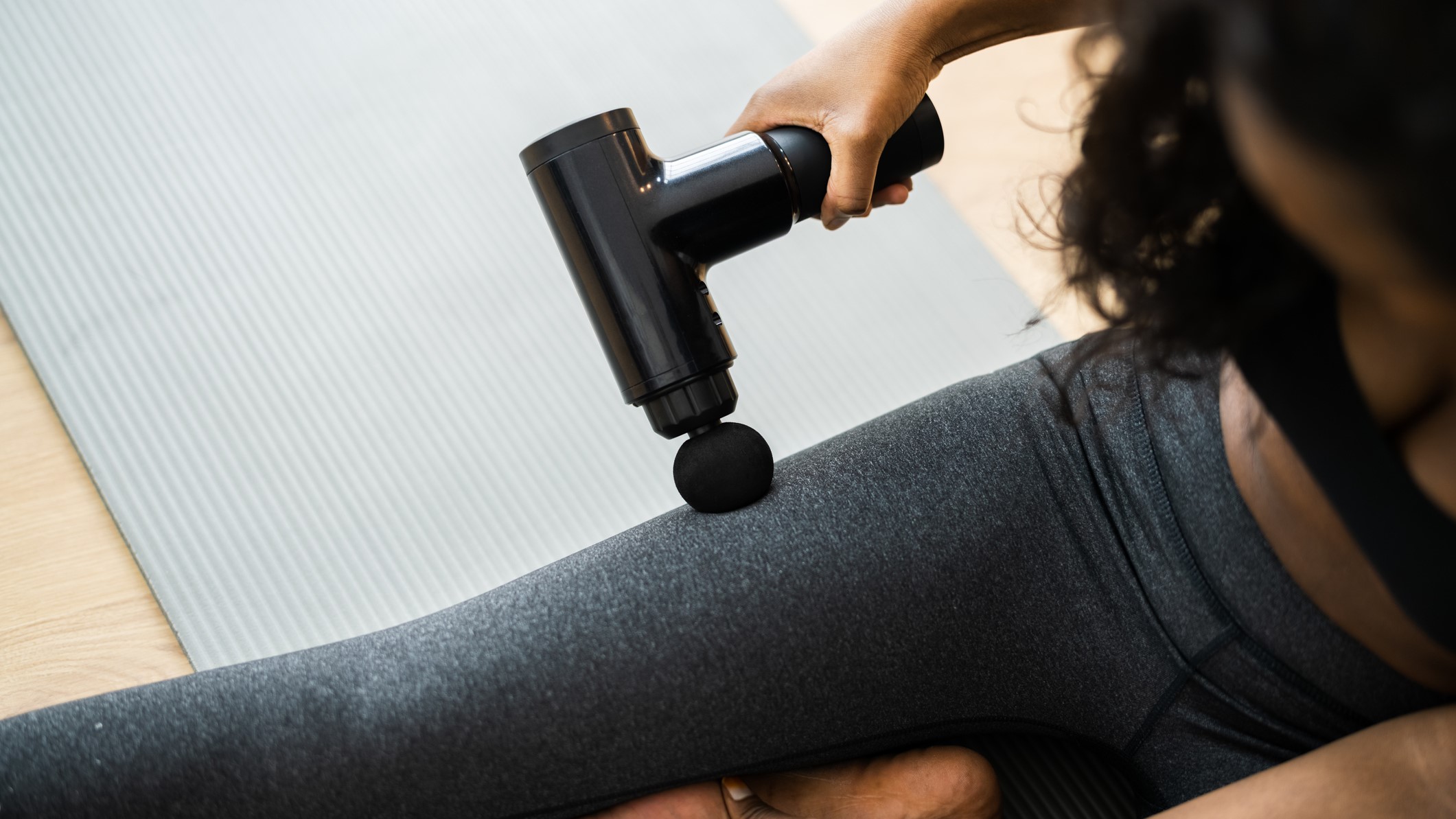
So you've bought one of the best massage guns on the market, but you're wondering how to use it after you've crossed the finish line of your first or fastest marathon.
Your legs are bound to feel beaten up after running 26.2 miles, but massage guns can be used as a recovery tool to help reduce DOMS (or delayed onset muscle soreness), and make getting down the stairs easier the next morning! According to the Cleveland Clinic, research has shown that massage guns deliver targeted percussive therapy directly to your muscles, helping to soothe DOMS, improving muscle recovery, and increasing range of motion and blood flow
But how soon after running should you use a massage gun, and how can you tell the difference between muscle soreness and injury? To find out more, we spoke to health and wellness education specialist Nikos Skevis.
How soon after a marathon should you use a massage gun?
"Generally the guidelines with recovery techniques are to administer within a few hours of the event in order to maximize the benefits, but using a massage gun after this window will still provide some relief to the user," Skevis explains.
How can you tell if muscles are sore or injured?
"Running a marathon can bring on some seriously delayed onset muscle soreness (DOMS), so expect muscles in the legs such as the quads, hamstrings, and calves to be pretty sore! DOMS tends to peak 24 to 72 hours after exercise, so any soreness that gradually gets worse during that time period is likely to be normal.
"Any pain to a muscle that was brought on suddenly during the race is likely to be an injury and would likely benefit more from a cold compression rather than percussive therapy, although this will be a good tool to utilize in the latter stages of rehab."
As a reminder, when it comes to when you shouldn't use a massage gun, you shouldn't go near your body with a massage gun if you have a broken bone, sprain or strain, or an inflammatory injury.
What frequency should you use the massage gun at?
"A marathon will cause cellular damage to muscle tissue, leading to soreness and inflammation. There will also be an accumulation of metabolic waste products that can exacerbate the situation. To help your body remove waste products and improve these symptoms, try using your percussion device at a lower frequency (speed) for 90 to 120 seconds with a little more pressure applied as you move the device towards your heart (e.g. from the knee towards the hip). This will aid the lymphatic system (the bodies sewage system), with the removal of these waste products as well as mobilize static venous blood (carrying carbon dioxide).
"The lymphatic fluid will move towards the lymphatic nodes where waste can be filtered out and the blood will move back to the lunges, via the heart, to be refilled with oxygen. This will provide good conditions in the muscle tissue to aid recovery.
"It’s likely you may need to use a lighter pressure if you have severe DOMS, so avoid reaching a discomfort level of 7/10 or above. Spend a little more time on the areas that are particularly sore and this should gradually relieve symptoms. It may be helpful to use a soft attachment on particularly sensitive areas, such as the cushion attachment if using a Hypervolt."
Can massage guns help you recover faster?
"Along with the removal of metabolic waste and reducing inflammation, there are several other benefits to percussive therapy that can aid recovery. Increased circulation ensures that oxygen and nutrients can be efficiently shuttled into muscle tissue, whilst carbon dioxide (metabolic waste) can be taken away. Studies have shown that percussive therapy can reduce soreness and pain sensitivity, as well as reducing the symptoms of DOMS and improving flexibility. Percussion massage can also stimulate the parasympathetic nervous system (the rest and digest branch of the nervous system), which stimulates relaxation and promotes tissue healing. To feel the relaxation effects of percussive therapy, it is advised to use the device for a longer period of time such as 20 minutes or more."







